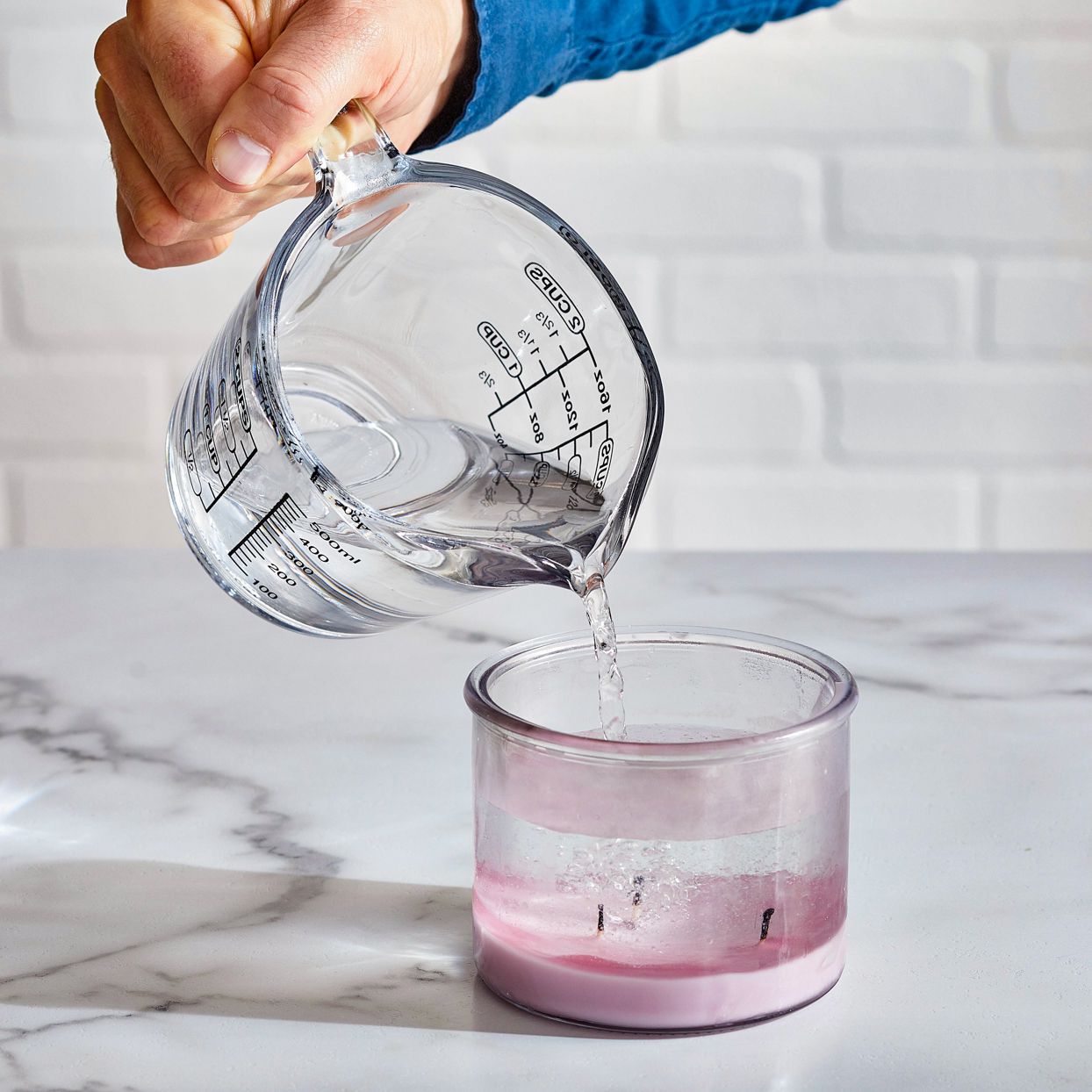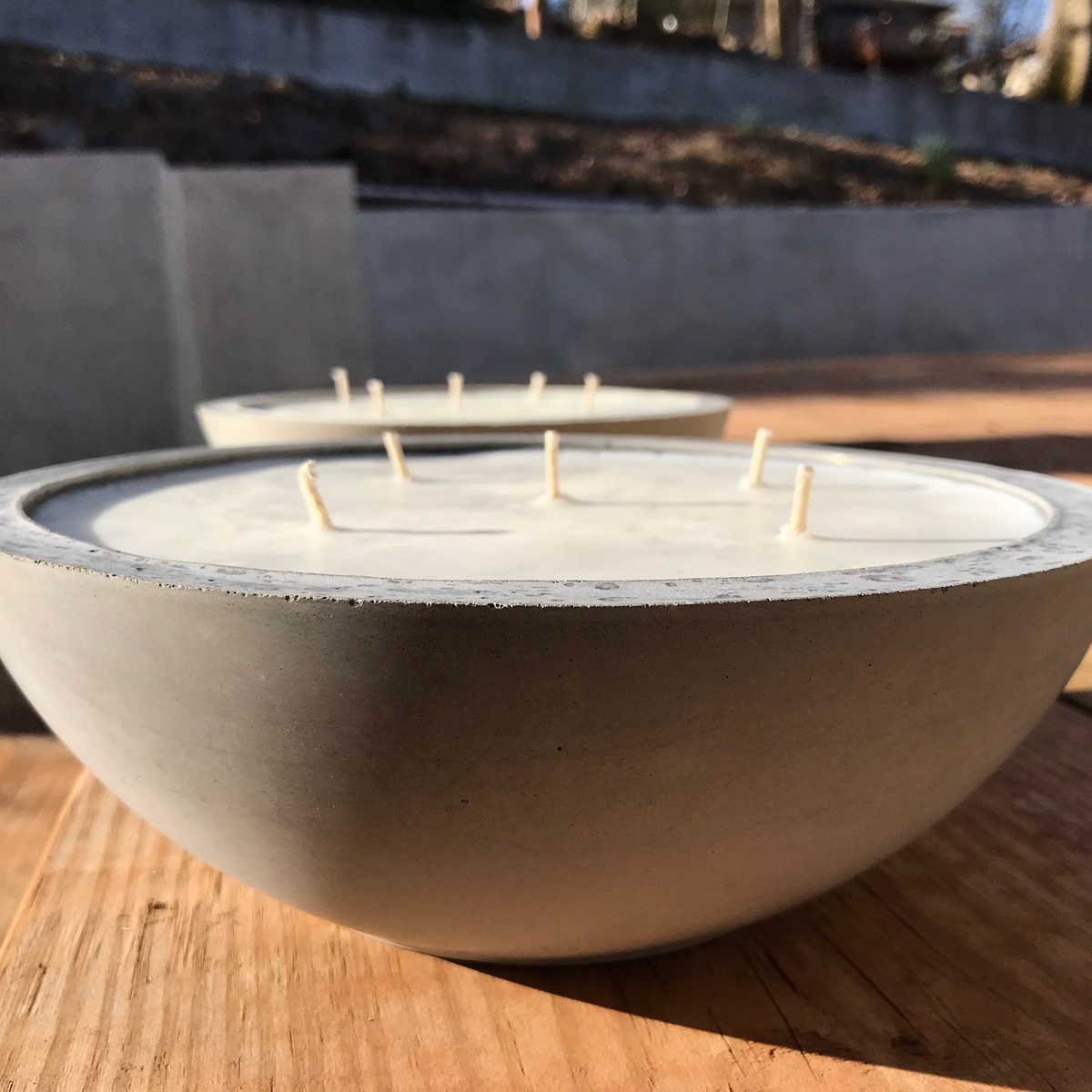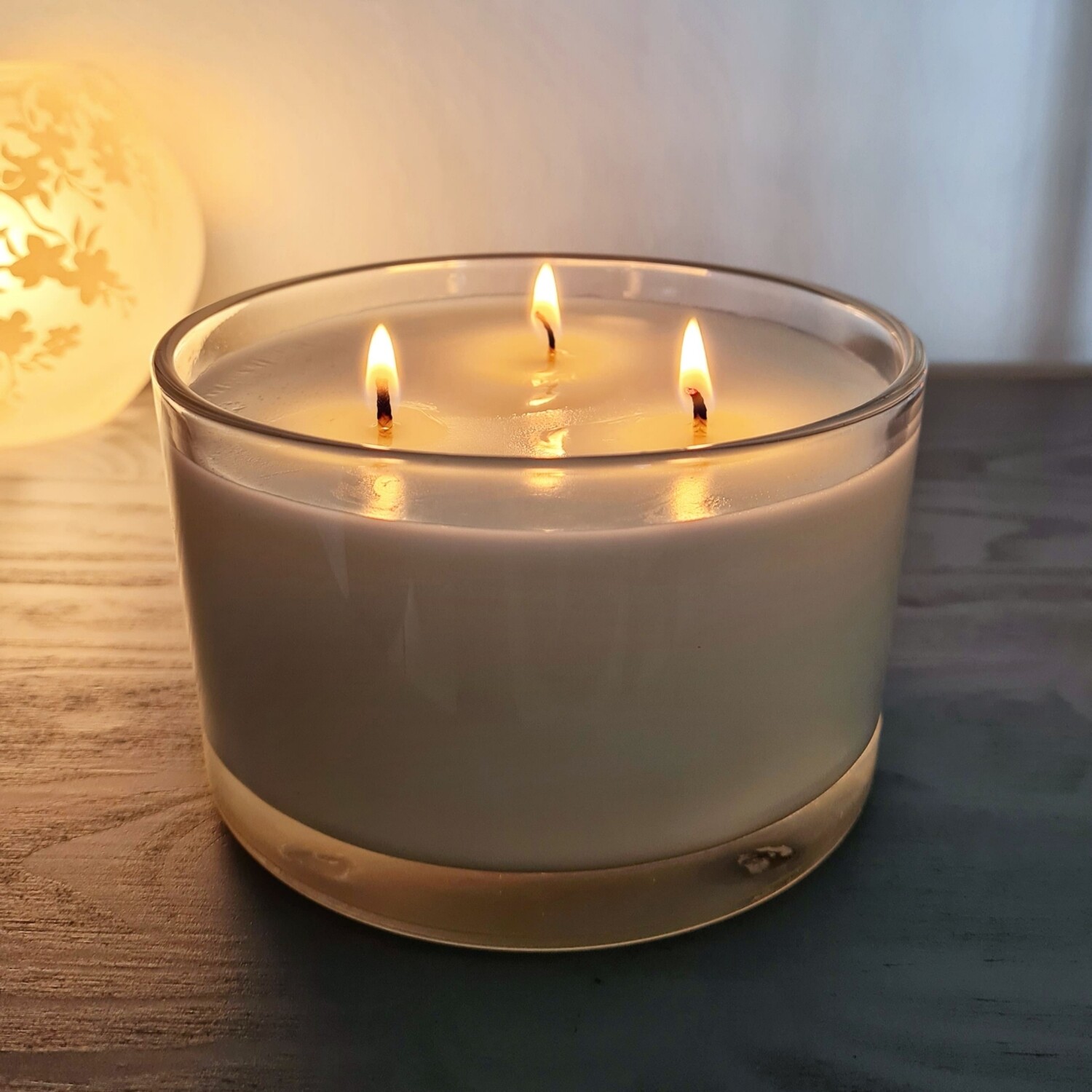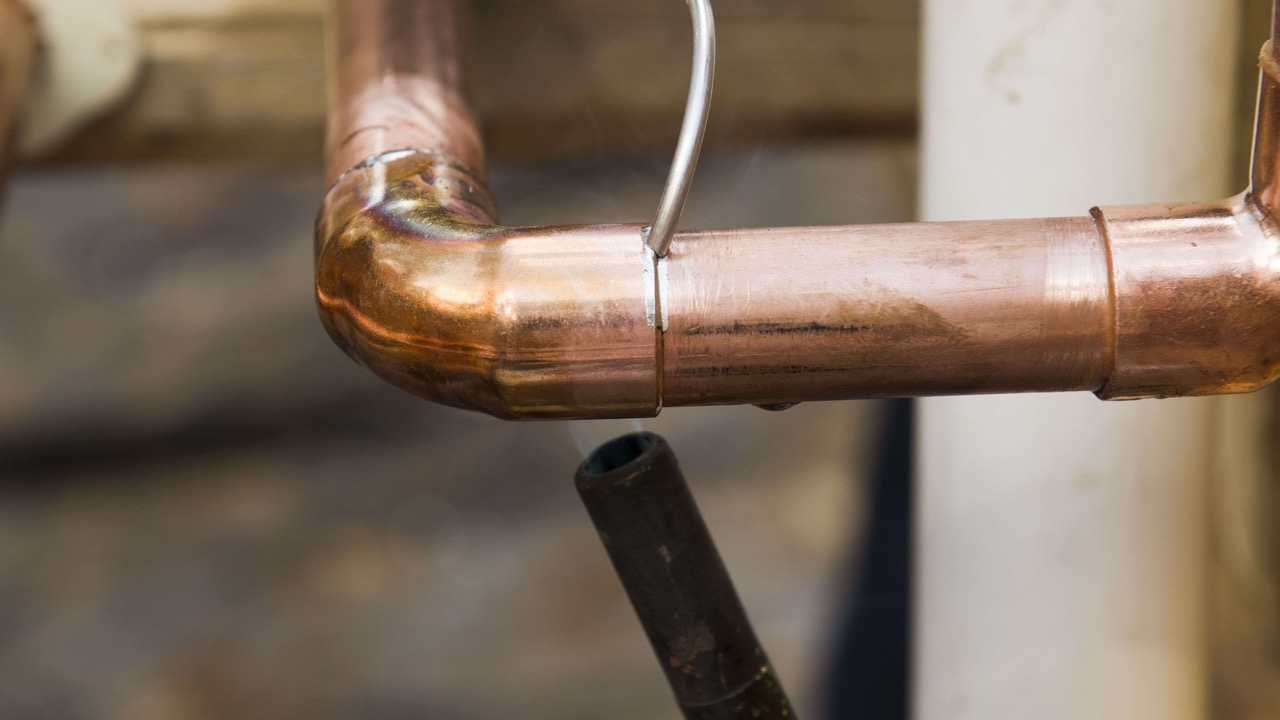

Articles
What Temperature To Melt Soy Wax For Candles
Modified: January 3, 2024
Discover the ideal temperature to melt soy wax for candles with our informative articles. Find expert tips and techniques for achieving perfect candle making results.
(Many of the links in this article redirect to a specific reviewed product. Your purchase of these products through affiliate links helps to generate commission for Storables.com, at no extra cost. Learn more)
Introduction
Welcome to the world of soy wax candles! If you are a candle enthusiast or looking to start your own candle-making venture, understanding the melting temperature of soy wax is essential. In this article, we will explore the importance of melting temperature for soy wax candles, the factors that affect it, and the recommended temperature for achieving optimal results.
Soy wax has become increasingly popular in the candle-making industry due to its numerous benefits. Derived from soybean oil, it is a renewable resource and offers a cleaner and longer-lasting burn compared to paraffin wax. Soy wax candles also produce less soot and are eco-friendly, making them a favorite among environmentally conscious consumers.
However, to unleash the full potential of soy wax, it must be properly melted before pouring it into candle molds or containers. The melting temperature plays a crucial role in achieving the desired consistency, fragrance release, and overall performance of the candle.
Whether you are a beginner or an experienced candle maker, understanding the melting temperature of soy wax is key to producing high-quality candles. Let’s dive deeper into why it matters and how it can impact your candle-making process.
Key Takeaways:
- Mastering the melting temperature of soy wax is crucial for achieving consistent texture, optimal fragrance release, and improved burn performance in candles. Factors like wax type, additives, and environmental conditions influence the melting process.
- Avoid common mistakes such as overheating the wax, adding fragrance oils at high temperatures, and using incorrect wick sizes to ensure the quality, performance, and safety of soy wax candles. Experiment, learn, and enjoy the art of candle making.
Read more: What Temperature Do Candles Melt
What is Soy Wax?
Soy wax is a natural alternative to traditional paraffin wax that is derived from soybean oil. It is made by hydrogenating soybean oil, a process that transforms the liquid oil into a solid wax. This sustainable and renewable material has gained popularity in recent years due to its numerous advantages over other types of candle wax.
One of the key benefits of soy wax is its environmentally friendly nature. Unlike paraffin wax, which is derived from petroleum, soy wax is made from a renewable resource – soybeans. Soybeans are grown abundantly in many parts of the world, making soy wax a more sustainable choice. Additionally, soy wax is biodegradable, meaning it breaks down naturally in the environment without causing harm.
In terms of performance, soy wax candles offer a range of advantages. They have a cleaner burn, producing minimal soot and smoke compared to paraffin candles. This clean burn reduces indoor air pollution and keeps your candles and surrounding surfaces free from black soot deposits. Soy wax candles also tend to have a longer burn time, giving you more value for your money.
Another distinguishing feature of soy wax is its ability to hold and release fragrance. Soy wax has excellent scent throw, which means it releases fragrances more effectively than other types of wax. This makes soy wax candles a popular choice for those who enjoy filling their homes with delightful aromas.
Soy wax is also a versatile material that can be easily colored and molded into various candle shapes and sizes. Its low melting point allows for seamless blending with fragrance oils and essential oils, creating endless possibilities for customization.
With its eco-friendly nature, clean burn, strong scent throw, and versatility, soy wax has become the go-to choice for many candle enthusiasts and professionals. Understanding how to melt soy wax properly is vital to harnessing the full potential of this remarkable candle-making ingredient.
Importance of Melting Temperature for Soy Wax Candles
When it comes to making soy wax candles, the melting temperature plays a crucial role in achieving optimal results. The melting temperature refers to the temperature at which the solid soy wax transforms into a liquid state, ready to be poured into candle molds or containers. Here are a few reasons why the melting temperature is important:
- Consistent Texture: The melting temperature determines the consistency of the melted soy wax. If the temperature is too low, the wax may not fully melt, resulting in lumpy or uneven candles. On the other hand, if the temperature is too high, the wax may become too liquid and lose its shape. Finding the right melting temperature ensures a smooth and consistent texture in the melted wax, which contributes to the overall quality of the finished candles.
- Fragrance Release: The melting temperature affects the release of fragrance in soy wax candles. Fragrance oils are typically added to the melted wax, and it is crucial to ensure that the temperature is just right for optimal scent throw. A higher melting temperature can cause the fragrance oils to evaporate too quickly, resulting in a weaker aroma. Conversely, a lower melting temperature may not allow the fragrance to disperse effectively. Finding the ideal melting temperature allows the fragrance to blend seamlessly with the wax, resulting in a well-scented candle.
- Burn Performance: The melting temperature affects the burn performance of soy wax candles. If the wax is not melted at the proper temperature, it can lead to issues such as tunneling or excessive smoking. Tunneling refers to when the candle burns straight down in the center, leaving wax unused on the sides. This can reduce burn time and waste wax. By melting the soy wax at the recommended temperature, you can ensure that the candle burns evenly, maximizing its burn time and overall performance.
- Candle Appearance: The melting temperature also plays a role in the final appearance of the soy wax candles. If the wax is not melted at the right temperature, it can result in imperfections such as air bubbles, sinkholes, or cracking. These aesthetic flaws can detract from the visual appeal of the candles. By properly melting the wax at the recommended temperature, you can minimize these issues and create visually pleasing candles.
- Safety: Lastly, the melting temperature is important for safety considerations. Working with wax involves heat, and it is essential to handle it with caution. If the melting temperature is too high, it can increase the risk of burns or accidents. Maintaining the appropriate melting temperature ensures a safe working environment while handling the melted wax.
In summary, the melting temperature of soy wax is crucial for achieving consistent texture, proper fragrance release, optimal burn performance, appealing candle appearance, and ensuring safety during the candle-making process. Understanding and controlling the melting temperature will contribute to producing high-quality soy wax candles with excellent performance and aesthetic appeal.
Factors Affecting Melting Temperature
Several factors can affect the melting temperature of soy wax. Understanding these factors will help you adjust and control the melting temperature to achieve the desired results in your candle-making process. Here are some key factors that influence the melting temperature of soy wax:
- Type and Quality of Soy Wax: Different types and brands of soy wax may have slightly different melting temperature ranges. It’s essential to use a high-quality soy wax that is specifically formulated for candle making to ensure consistent melting characteristics. Cheaper or lower-quality soy waxes may have varying melting points, leading to inconsistent results.
- Additives: Additives such as stearic acid or other natural waxes can be incorporated into the soy wax to alter its melting temperature. These additives can increase or decrease the melting point of the wax, allowing for more flexibility in candle-making. However, it’s important to note that excessive use of additives can affect the performance and quality of the candles.
- Fragrance oils and Essential Oils: The type and amount of fragrance or essential oils you use can affect the melting temperature of soy wax. Some fragrance oils have a higher flashpoint, which means they require slightly higher melting temperatures to blend properly with the wax. The viscosity of the oils can also impact the melting point. It’s important to refer to the manufacturer’s guidelines for recommended temperatures when using fragrance oils or essential oils.
- Colorants: Colorants such as dyes or pigments can influence the melting temperature of soy wax. Some colorants require higher temperatures to dissolve completely, while others can be blended at lower temperatures. As with fragrance oils, it’s crucial to follow the instructions provided by the manufacturer to achieve the desired color consistency without affecting the wax’s melting properties.
- Container or Mold Size: The size and material of the container or mold used for making soy wax candles can impact the melting temperature. Larger containers or molds may require slightly higher temperatures to ensure that the melted wax reaches all corners and properly adheres to the container walls. Conversely, smaller containers or molds may heat up faster, requiring lower temperatures to avoid overheating and potential damage.
- Environmental Factors: Ambient temperature and humidity can affect the melting temperature of soy wax. In warmer climates, you may need to adjust the melting temperature slightly lower to prevent the wax from getting too liquid or melting too quickly. Conversely, in colder environments, you may need to increase the melting temperature slightly to ensure complete melting.
By considering these factors and making necessary adjustments, you can control the melting temperature of soy wax and achieve consistent and successful results in your candle-making endeavors. It’s essential to experiment and find the right balance to create candles with the desired texture, fragrance, burn performance, and visual appeal.
To melt soy wax for candles, heat it to a temperature between 170-180°F (77-82°C) to ensure it melts evenly and retains its fragrance. Use a double boiler or a wax melter to avoid direct heat.
Recommended Temperature for Melting Soy Wax
The recommended temperature for melting soy wax is typically in the range of 120 to 180 degrees Fahrenheit (49 to 82 degrees Celsius). However, it’s important to note that the specific melting temperature may vary depending on the type and brand of soy wax you are using, as well as any additives, fragrance oils, or colorants that are being incorporated into the wax.
Here are some general guidelines to help you determine the appropriate temperature for melting soy wax:
- Refer to the Manufacturer’s Instructions: Always refer to the manufacturer’s instructions and guidelines provided with the soy wax you are using. They often include specific recommendations for melting temperature and any other relevant instructions to achieve optimal results.
- Start with a Lower Temperature: As a general rule, it’s advisable to start with a lower temperature and gradually increase if needed. Begin melting the wax at a temperature of around 120 degrees Fahrenheit (49 degrees Celsius). This gentle heat will help prevent the wax from overheating and potentially degrading its quality.
- Avoid Excessive Heating: Overheating soy wax can lead to discoloration, loss of fragrance, or even a change in the properties of the wax. It’s essential to avoid excessive heating and maintain a steady temperature throughout the melting process.
- Monitor the Wax: While melting, monitor the consistency and appearance of the wax. Stir it occasionally to ensure even melting and heat distribution. If the wax appears fully melted and smooth, it is ready to be removed from the heat. Avoid leaving the wax unattended during the melting process to prevent overheating or accidental spills.
- Note the Flashpoint of Fragrance Oils: If you are adding fragrance oils or essential oils to the melted soy wax, be sure to consider their respective flashpoints. The flashpoint is the temperature at which the oils can potentially ignite. Add the fragrance oils when the melted wax has cooled down to a temperature that is safe for the specific oils being used.
- Adjust as Needed: Depending on the specific requirements of your candle-making process, you may find that you need to adjust the temperature slightly higher or lower. Factors such as the size of the container or mold, the ambient temperature, and the desired outcome of your candles can all influence the melting temperature. Through experimentation and practice, you’ll gain a better understanding of the optimal melting temperature for your specific needs.
By following these recommendations and considering the specific characteristics of your soy wax and other ingredients, you can achieve the ideal melting temperature that results in consistently beautiful, fragrant, and long-lasting soy wax candles.
Read more: How To Melt Wax To Make Candles
Methods for Melting Soy Wax
There are several methods you can use to melt soy wax effectively and safely. The method you choose may depend on the amount of wax you are melting, the equipment you have available, and your personal preference. Here are a few commonly used methods for melting soy wax:
- Double Boiler Method: This is a popular and widely used method for melting soy wax, especially for smaller quantities. To use this method, you will need a double boiler setup. Fill the bottom pot with water and place it on the stove over medium heat. Bring the water to a gentle simmer. Place the soy wax in the top pot or heat-safe container and place it over the simmering water. As the steam from the simmering water heats the top pot, the wax will gradually melt. Stir occasionally to ensure even melting.
- Microwave Method: The microwave method is convenient and quick, especially for smaller batches of soy wax. Start by placing the soy wax in a microwave-safe container. Heat the wax in short bursts of 30 seconds at a time, stirring in between each burst. Be careful not to overheat the wax, as it can lead to rapid boiling or uneven melting. Continue heating and stirring until the wax is fully melted and smooth. Use oven mitts or a towel to handle the container, as it will become hot during the process.
- Candle Wax Melter/Pouring Pot: If you plan to make candles frequently or in larger quantities, investing in a candle wax melter or a specialized pouring pot can be beneficial. These tools are designed specifically for melting wax and often come with a built-in temperature control feature. Simply add the soy wax to the melter or pouring pot, set the desired temperature, and allow the wax to melt thoroughly. Stir occasionally to ensure even melting and to prevent hot spots.
- Electric Wax Warmer: Electric wax warmers are another convenient option for melting soy wax. These devices, commonly used for melting wax melts or tarts, can also be suitable for melting soy wax for small candle-making projects. Place the soy wax in a heat-resistant container and set it on the wax warmer. The heat from the warmer will gradually melt the wax. Stir occasionally to ensure even heating.
Regardless of the method you choose, it’s important to follow safety precautions when melting soy wax. Remember to always use heat-resistant containers, handle hot wax with care, and never leave melting wax unattended. If you are using a heating source such as a stove or microwave, be mindful of fire hazards and avoid overheating the wax.
By selecting the method that works best for you and your specific candle-making needs, you can effectively and efficiently melt soy wax, ensuring a smooth and consistent outcome for your candles.
Common Mistakes to Avoid
When melting soy wax for candle making, it’s important to be aware of common mistakes that can negatively impact the quality and performance of your candles. By avoiding these mistakes, you can ensure a smooth and successful candle-making process. Here are some common mistakes to watch out for:
- Overheating the Wax: Overheating soy wax can lead to discoloration, loss of fragrance, and changes in the wax’s properties. It’s crucial to avoid excessive heating and maintain a steady temperature throughout the melting process. Always follow the recommended temperature guidelines provided by the soy wax manufacturer and use a thermometer to monitor the temperature accurately.
- Adding Fragrance Oils at High Temperatures: Adding fragrance oils to soy wax at temperatures that are too high can cause the oils to evaporate quickly and result in a weaker scent throw. Wait until the melted wax has cooled down to a safe temperature recommended by the fragrance oil manufacturer before adding the oils. This will ensure proper blending and a strong and lasting fragrance in your candles.
- Mixing Incompatible Fragrance or Essential Oils: Some fragrance oils or essential oils are not compatible with soy wax or may require specific temperature ranges for proper blending. It’s essential to read and follow the guidelines provided by the oil manufacturer. Mixing incompatible oils can result in poor scent throw, separation, or even damage to your candles.
- Using Incorrect Wick Size: The size of the wick used in your soy wax candles is crucial for proper burning. Using a wick that is too small may cause the candle to tunnel, while a wick that is too large can result in excessive smoke and soot. It’s important to select the appropriate wick size based on the diameter of your candles and the specific characteristics of the soy wax being used.
- Rushing the Cooling Process: After pouring the melted soy wax into candle molds or containers, it’s important to allow sufficient time for the candles to cool and solidify properly. Rushing the cooling process can lead to uneven cooling, sinkholes, and cracks. Follow the recommended cooling time provided by the wax manufacturer and avoid moving or disturbing the candles until they are fully solidified.
- Not Testing New Fragrances or Colorants: When introducing new fragrance oils or colorants to your soy wax candles, it’s crucial to conduct small test batches before making larger quantities. This allows you to evaluate how the new additives interact with the wax and ensure there are no adverse effects. Testing helps you avoid wasting a significant amount of wax and resources in case the results are not as expected.
- Using Poor-Quality Soy Wax: Choosing a high-quality soy wax specifically formulated for candle making is essential for achieving consistent and reliable results. Poor-quality soy wax may have inconsistent melting temperatures, lower fragrance retention, and overall poor performance. Invest in reputable brands that have been tested and recommended by experienced candle makers.
By avoiding these common mistakes and following best practices, you can enhance the quality, fragrance, and overall performance of your soy wax candles. Remember to always read instructions, conduct small tests when introducing new elements, and take your time to ensure a successful and enjoyable candle-making experience.
Conclusion
Melting soy wax is a fundamental step in the candle-making process, and understanding the importance of the melting temperature is key to producing high-quality soy wax candles. By following the recommended temperature guidelines, you can achieve consistent texture, optimal fragrance release, and improved burn performance in your candles.
Factors such as the type and quality of soy wax, additives, fragrance oils, colorants, container or mold size, and environmental conditions can all influence the melting temperature. By considering these factors and making necessary adjustments, you can control the melting temperature and produce candles that meet your desired standards.
When it comes to melting soy wax, there are several methods you can use, including the double boiler method, microwave method, candle wax melter/pouring pot, or electric wax warmer. Each method has its advantages and is suitable for different situations or personal preferences. Choose the method that works best for you and your candle-making needs.
It’s important to avoid common mistakes such as overheating the wax, adding fragrance oils at high temperatures, using incorrect wick sizes, rushing the cooling process, and using poor-quality soy wax. By being aware of these mistakes and following best practices, you can ensure the quality, performance, and safety of your soy wax candles.
In conclusion, understanding the melting temperature of soy wax and implementing proper melting techniques are essential for creating beautiful, fragrant, and long-lasting candles. Take the time to experiment, learn from your experiences, and enjoy the art of candle making. With a little practice and attention to detail, you can master the art of melting soy wax and create candles that bring warmth and ambiance to any space.
Frequently Asked Questions about What Temperature To Melt Soy Wax For Candles
Was this page helpful?
At Storables.com, we guarantee accurate and reliable information. Our content, validated by Expert Board Contributors, is crafted following stringent Editorial Policies. We're committed to providing you with well-researched, expert-backed insights for all your informational needs.















0 thoughts on “What Temperature To Melt Soy Wax For Candles”